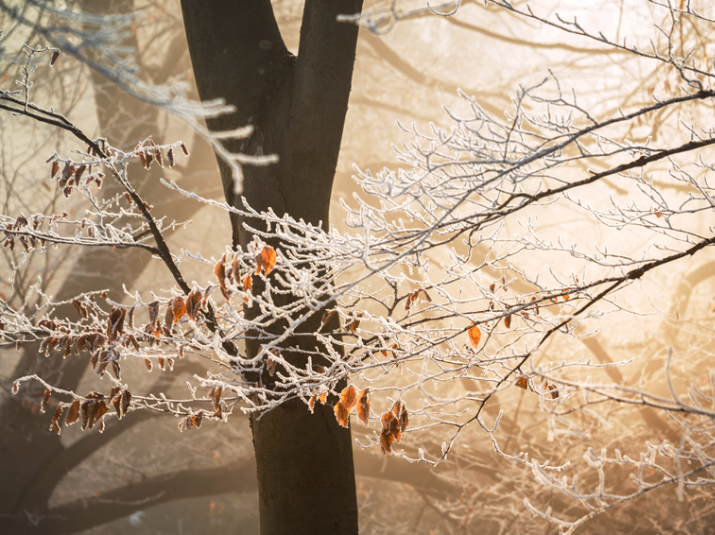• On a bright frosty day, choose matrix metering and aperture priority exposure and you'll find your shots are pretty much spot-on. If you still want to whiten up the scene, particularly on an overcast or cloudy day when you might get a slight blue cast, dial in a small amount of exposure compensation: +1/3 or +2/3 should do the trick. Take your photo, check the histogram on the LCD screen and adjust as necessary.
• Use your white balance settings to fine-tune the colours in your scene – on an overcast day, choose the vivid colour control and change the auto white balance to A3 to warm up the picture. The camera's warming range runs from A1 to A6, which adds an amber tone to the image, while the B1-6 range gives a cooling blue tone. If it's available on your camera, the snow/beach scene mode will automatically adjust the white balance and also add the appropriate exposure compensation.
• You don't need loads of kit – a wideangle lens is ideal for sweeping, frosted landscapes, while a macro lens will capture details and textures, such as frosty leaves and frozen spiders' webs. You can achieve the same effects with a telephoto zoom, with wideangles at the short end and close-up details at the telephoto end (you might need to take a couple of steps back to ensure you're not closer to your subject than the close-focus distance).
• The colder it is, the better the colours, due to ice crystals in the air diffracting the light, so shoot at the coolest times of the day – sunrise and sunset – although you're probably best aiming for dawn in case the sun burns the frost off during the day. Take a lens hood to cut down on flare when you're shooting into the light to capture that extra sparkle.


